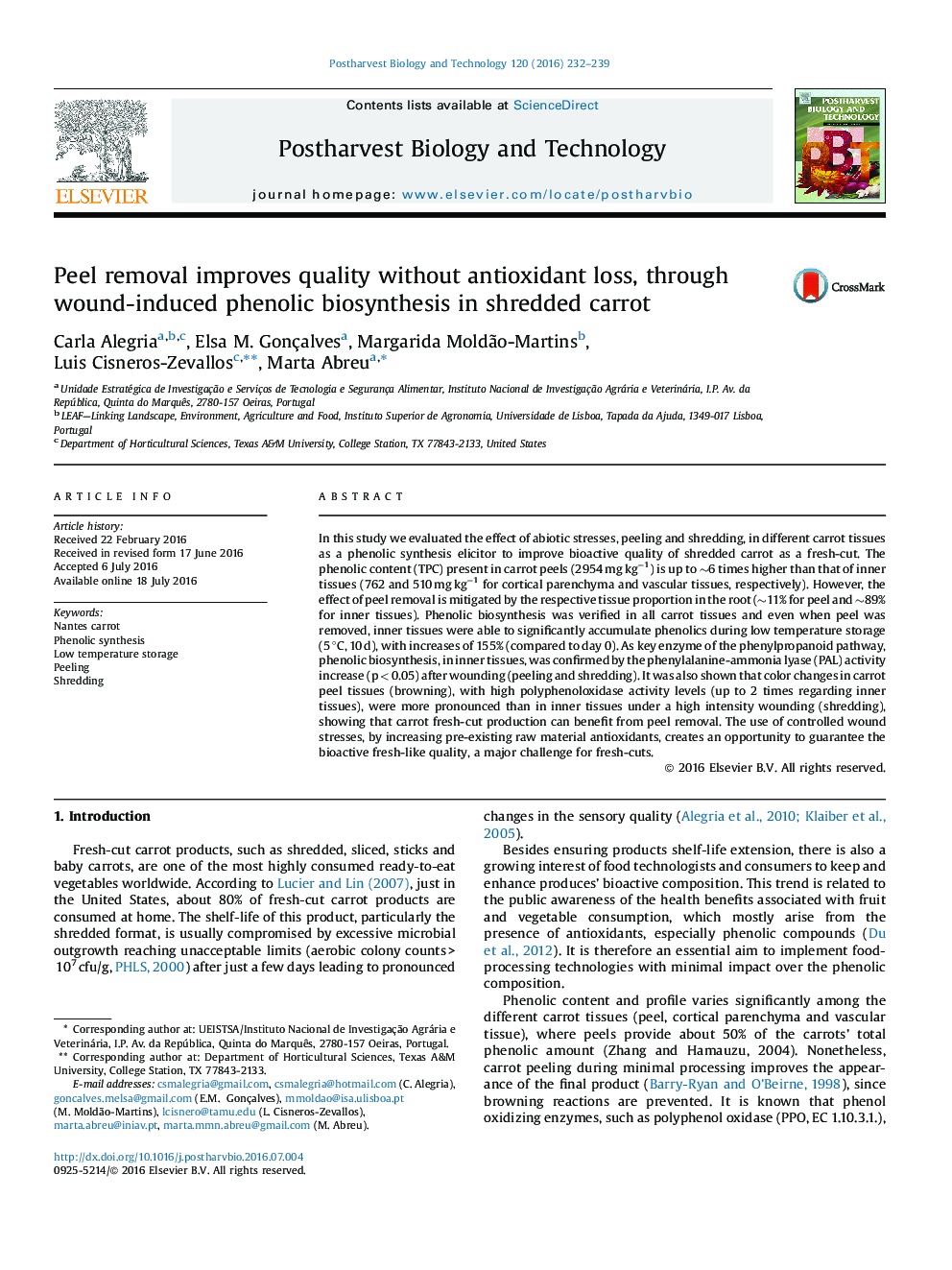| Article ID | Journal | Published Year | Pages | File Type |
|---|---|---|---|---|
| 4517746 | Postharvest Biology and Technology | 2016 | 8 Pages |
•Peeling improves carrot shreds health benefits while preventing discoloration.•Most carrot phenolics are concentrated in cortical and vascular tissues.•Carrot tissues have distinct phenolic biosynthesis under wounding stress.•Browning reactions occur mostly in peel tissues due to high PPO activity.•Peel removal does not affect the overall phenolic synthesis of shredded carrots.
In this study we evaluated the effect of abiotic stresses, peeling and shredding, in different carrot tissues as a phenolic synthesis elicitor to improve bioactive quality of shredded carrot as a fresh-cut. The phenolic content (TPC) present in carrot peels (2954 mg kg−1) is up to ∼6 times higher than that of inner tissues (762 and 510 mg kg−1 for cortical parenchyma and vascular tissues, respectively). However, the effect of peel removal is mitigated by the respective tissue proportion in the root (∼11% for peel and ∼89% for inner tissues). Phenolic biosynthesis was verified in all carrot tissues and even when peel was removed, inner tissues were able to significantly accumulate phenolics during low temperature storage (5 °C, 10 d), with increases of 155% (compared to day 0). As key enzyme of the phenylpropanoid pathway, phenolic biosynthesis, in inner tissues, was confirmed by the phenylalanine-ammonia lyase (PAL) activity increase (p < 0.05) after wounding (peeling and shredding). It was also shown that color changes in carrot peel tissues (browning), with high polyphenoloxidase activity levels (up to 2 times regarding inner tissues), were more pronounced than in inner tissues under a high intensity wounding (shredding), showing that carrot fresh-cut production can benefit from peel removal. The use of controlled wound stresses, by increasing pre-existing raw material antioxidants, creates an opportunity to guarantee the bioactive fresh-like quality, a major challenge for fresh-cuts.
